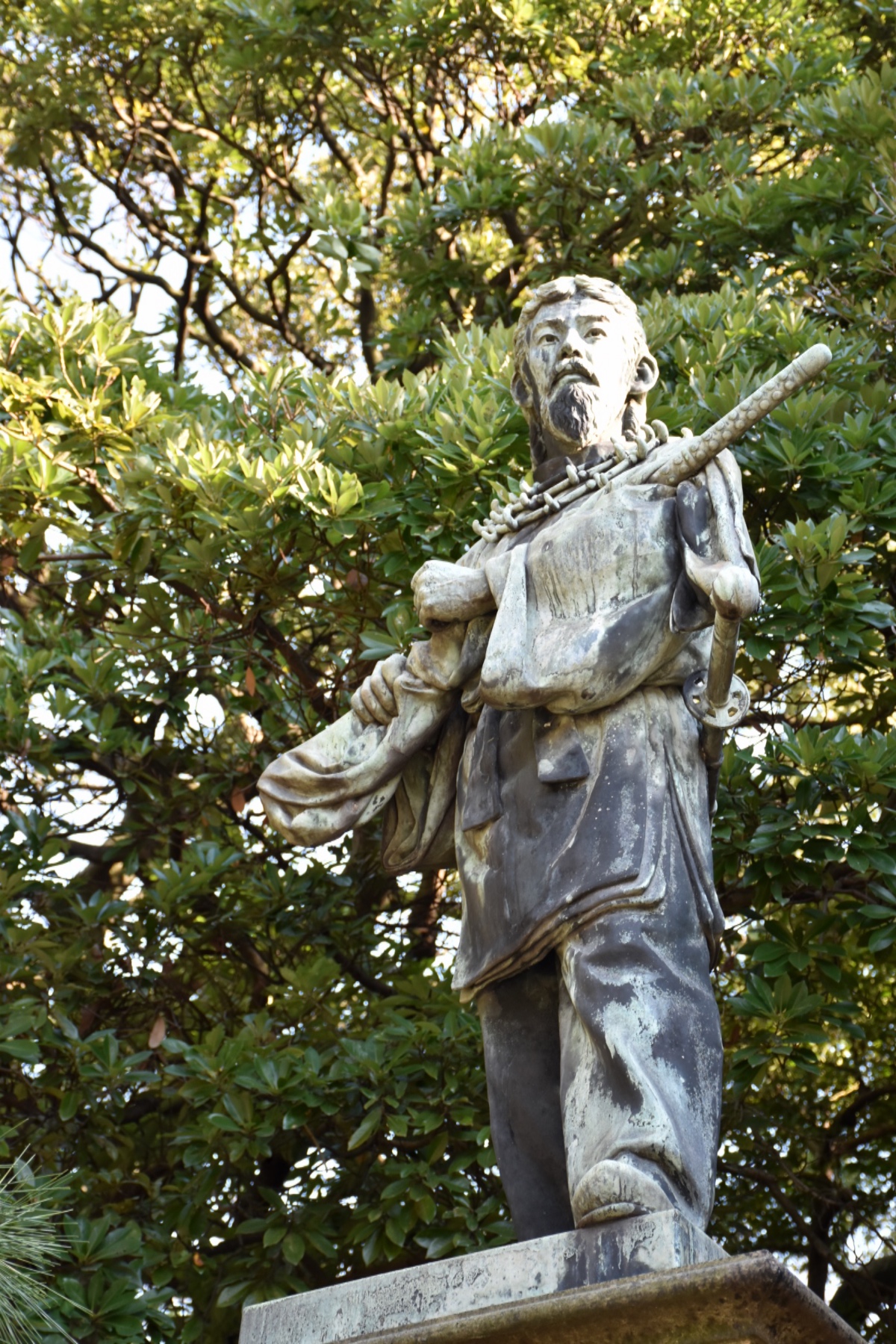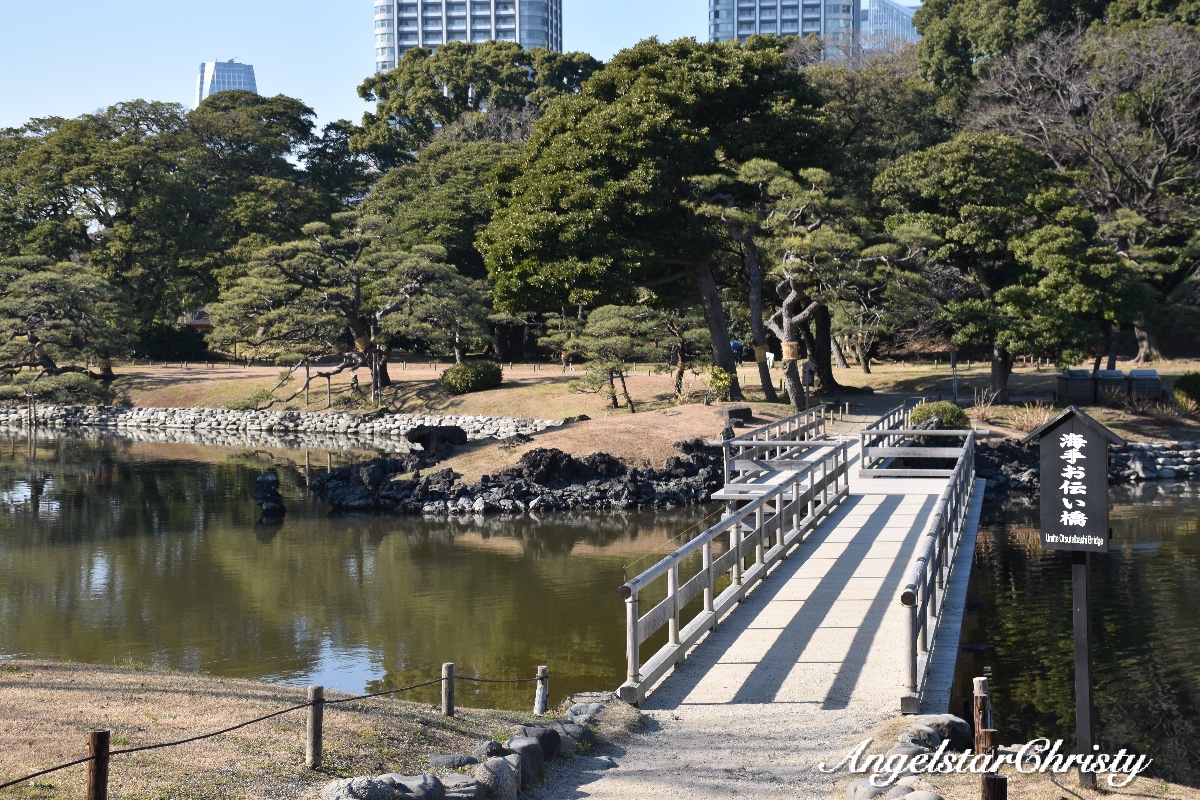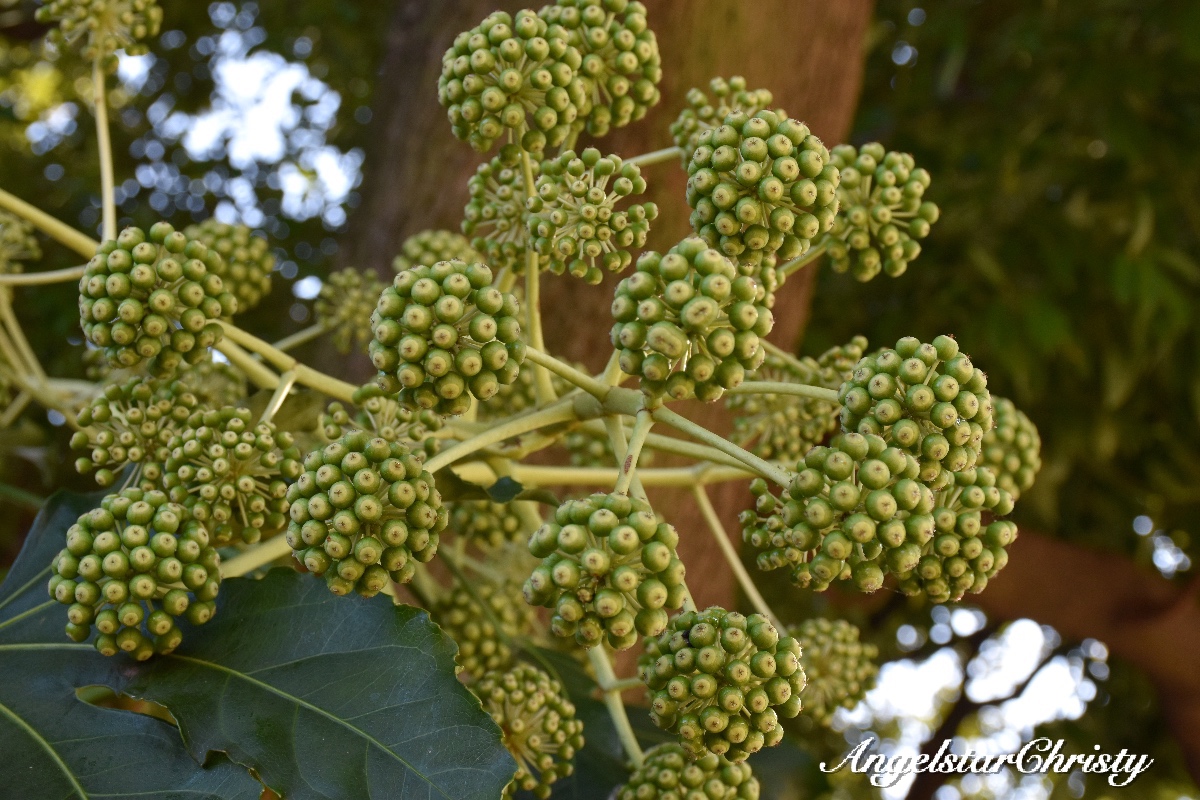
Hamarikyu Gardens (浜離宮恩賜庭園 Hama-Rikyu Onshi Teien Garden) is the disembarkation point for the Water Bus on the Sumida River Line departing from the Asakusa pier.
I am glad that they included this garden in the route; and the fees to the garden were part of the price we paid for the boat (300 yen) since the water bus stops right on the grounds of the gardens itself, for it is truly an enchanting place to stop by even en route.
Located right in the center of the city of Tokyo, Hamarikyu (in short) is a modest yet ornately designed in its landscape, making it one of the attractions in the city.
This is really right smack in the middle of the bustling city; with the Shiodome district situated adjacent to the park.

It is really a stark contrast yet amusingly so as the silhouettes of the intricately curated trees take its place in the foreground among the distinguished modern skyscrapers standing bold, glistening from the reflection of the sunlight in the background.
A gardens in the city, evidently, as the statement holds in that fine depiction.
Compared to the other gardens in Tokyo, Hamarikyu pales in comparison especially when it comes to being one of the hanami spots in the city, but that is not any reason to belittle this garden which is just as unique and beautiful in its own way.
Hamarikyu Gardens has a rich history from the very beginning of its origins and have played various important roles through time.
History and Story of Hamarikyu Gardens

It was originally built as a feudal lord's residence (Matsudaira Tsunashige of the Kofu domain) in 1654, during the Edo period.
The site was formerly a tidal duck hunting ground where part of the tidal ponds were reclaimed by Matsudaira Tsunashige for the construction of his family villa.

The gardens today still has the tidal pond and two duck hunting grounds on its premises.
Hamarikyu was also an extended part of the Edo Castle; serving as a place for strolling and then being the detached part of the Imperial Castle, but mainly it is the residence to the Tokugawa shogunate.
The founder's son, Ienobu, who later became the 6th Shogun of Japan converted the family residence to that of the official residence for the Tokugawa Shogunate where the gardens could then be accessed by boat.
The former landing could still be seen, as it is located not far away from the current pier for the water bus landing.

The gardens was renovated during Ienobu's time; where they were named as Hama Goden which means Beach Palace.
The facade of the garden today was a result of multiple facelifts over the generations and it was under the rule of the 11th Shogun, Inari, where the garden appears as it is now.
Not far away is another garden; Kyu-Shiba Rikyu Gardens, which is also another garden in the city and together, both gardens became properties of the Imperial family following the Meiji restoration in 1868.
It was during then that the name Hamarikyu's name was given, which literally means Hama Detached Palace.
Surviving many years under the shoguns and imperial family, the gardens was devastated in its state following the huge disaster of the Great Kanto earthquake in 1923 which destroyed majority of Tokyo's landmarks as well and it was later restored and became part of Tokyo city following the Second World War.
It is in 1946; on April 1 that Hamarikyu Gardens was officially opened to the public.
Hamarikyu is a beautiful garden with an interesting history; in many ways synchronized with the cultural evolution from olden days Japan to modernization, which makes it rightfully deserving of it being treasured as a great cultural and historical as it was bestowed in 1952.

There are many gardens in the city these days, with the importance placed on greenery and nature in parallel with the race of modern development, yet each of these gardens, are just so similar in many ways and at the same time, still uniquely enchanting.
I have always loved gardens, and Hamarikyu is just one beautifully landscaped gardens which could just keep me there, captivated for hours; just like a realm of fantasy I was walking through.
From the manicured lawns to the ornate elegance of the tree branches casting their shadows on the ground accompanied by the light rustle of the leaves and colors from florals and fruits grown on the bushes, to the gentle flaps of the ducks as they swim in pairs in the glistening pond, this is a gardens which is very much alive as it preserves its story and impressions throughout time.







Hamarikyu Gardens is just like that wonderland which could just keep you under its spell as you wander through the delicately cared grounds, leaving your shadows behind you wherever you go.
I felt like Alice in Wonderland, except for two things; I was dressed in the wrong color and there was just the ducks and pigeons instead of the deck of cards and Mad Hatter.
For everything about this place is just like wonderland, albeit in a more enchanting and dreamy way and one can even enjoy tea in the teahouse specially built for one to enjoy the scenic (and unique) views of the modern city in the background or just simply, for relaxation.
That just fits the bill for wonderland, doesn't it?
An en route stop this is definitely not, for Hamarikyu gave me a magical afternoon and that lovely opportunity to commune with nature, right in the midst of the buzzing metropolitan Tokyo.
That is just simply memorable.




Getting There:
1. If you take the Water Bus from Asakusa Pier on the Sumida River Line like me, you are definitely bound for this place for 740 yen (300 yen entrance fees to the garden included in the ticket) and you will land right at the gardens directly.
However, take note that the stop only take place if you are traveling FROM Asakusa and the gardens is not part of the route TO Asakusa.
2. If you are heading to the Hinode Pier, then you can also make a detour at this gardens, priced at 740 yen One way.
3. Take the Oedo Subway Line or Yurikamome Elevated Train to Shiodome Station and take a 5-10 minute walk.
OR
Get off at the JR Shimbashi Station and take a 10-15 minute walk.
Opening Hours: 9.00am until 17.00pm (last entry permitted at 16.30pm)
Closed from December 29 to January 3
Entrance Fees: 300 yen
Links:
Hamarikyu Gardens
Japan Guide
Japan National Tourism Organization: Official Guide
Go Tokyo
Japan Visitor
You do not have to agree with me.
Art Direction and Photography Styling by Me.
Photos/Videos all belong to me and are copyrighted.
Please kindly ask for permission if you need to use any of my images.
Check out my Pinterest @Angelstarc
Follow me on my live updates on my life, happening on SNAPCHAT @angelstarchrist



0 comments